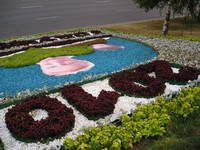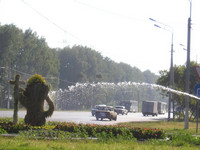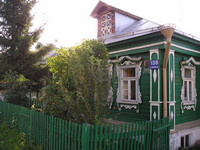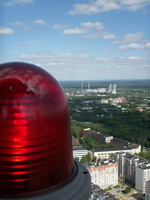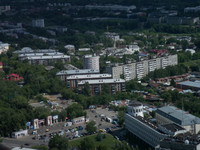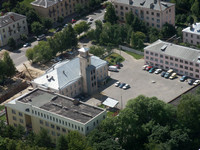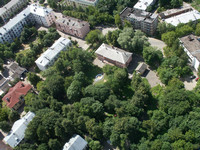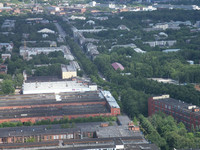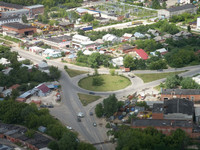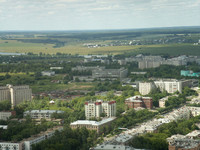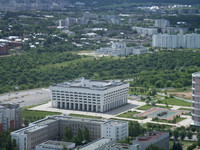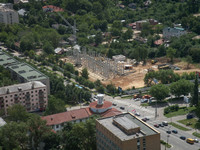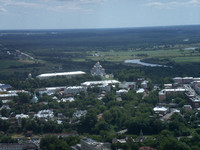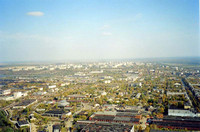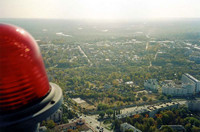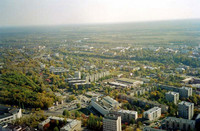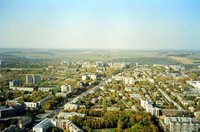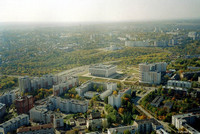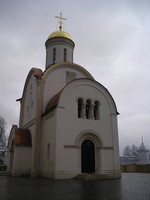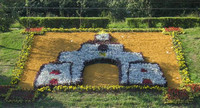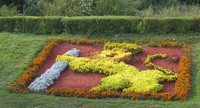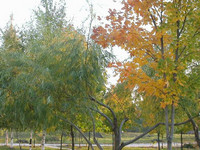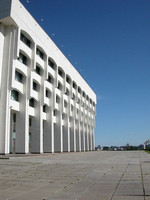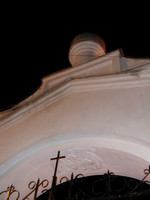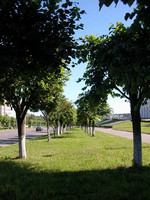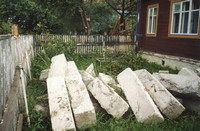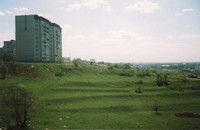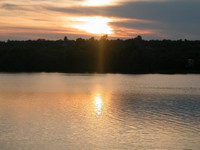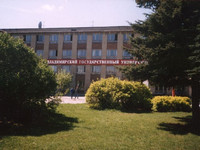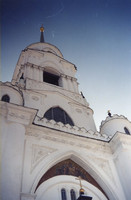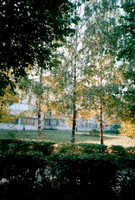Country of Stanislav
The country where I live is the center of Russia, its heart. The city of Vladimir, that used to be the capital of Russia, now belongs to a touristic route called “The Golden Ring of Russia”. There are a lot of publications dedicated to the whole route and to its parts separately. Here, the author's vision of the country is presented, through my friends' and my eyes.
Vladimir
Nobody knows when Vladimir was founded. The only thing is known that it was the time of heroes and legends. The legends say that Russian Prince Vladimir “Red Sunny” campaigned to the eastern part of his principality and founded there a fortress to defend his state Kievskaya Rus from its enemies. It happened in 990. The second variant is that Vladimir was founded in 1108 by Russian Prince Vladimir Monomakh. Moreover, there is the third tale…
Only one moment in the early history of Vladimir is not disputed. It is the origin of the town's name. An attentive reader noticed that both Princes who could found the town went under the name of Vladimir.
In the 12th century, Prince Andrey Bogolyubsky, a son of Grand Prince Yury Dolgoruky, decided to leave Central Russia, where many princelings lived and were at odds. He stopped in the eastern lands. There were fertile soils, deep forests, kind people and no other princes.
In the time of his rule, Vladimir became one of the largest, most beautiful and most important towns in ancient Russia.
In 1157, Vladimir became the capital of Vladimir and Suzdal Principality. Town grew up very quickly.
On the steep bank of the river Klyazma, the Cathedral of the Assumption was built. It was in 1158 – 1160. Soon the cathedral became the religious center of the principality.
From chronicles is known that originally the cathedral was smaller and had four pillars and one dome. The cathedral acquired its present appearance because of rebuilding done by Prince Vsevolod III after the fire of 1185. The old walls were surrounded by new ones; four domes were added and covered with gilded copper. The reconstructed cathedral became one of the most splendid creations of Russian architecture and a model for Russian builders through the centuries.
The interior of the Cathedral of the Assumption is also impressive. It contains some ancient frescoes done by great Russian artists Andrey Rublev and his apprentice Daniil Cherny. The best-preserved fresco is “The Last Judgement”. The fresco is full of a radiant optimism; it reflects the spiritual revival of the Russian people after their victory on Kulikovo Field in 1380. The iconostasis at the cathedral used to contain the famous Vladimir Icon of the Mother of God that Andrey Bogolyubsky brought from Kiev. At present many icons of the cathedral are displayed at State Tretyakov Gallery in Moscow.
There are many tombstones in the cathedral where famous people are buried. Among them there are princes Andrey Bogolyubsky, Vsevolod III, his son George and others.
There is one more place near Vladimir concluded with the name of Andrey Bogolyubsky. It is about 10 km from the center of Vladimir. The name of this place is Bogolyubovo. The legend says that once Andrey was returning home with the icon and decided to have a rest there. He slept and a saint dream came to him. He decided to build there a palace, where later he was cruelly killed.
Not far from the Bogolyubovo Palace, the Church of the Intercession on the Nerl is situated. The graceful white church is really the gem of ancient Russian architecture. It was built in one summer of 1165 in the mouth of the river Nerl. There is a legend that Prince Andrey built this church in the meadows not far from his Bogolyubovo Palace after the death of his favorite son Izyaslav, in memory of him.
During the rule of Andrey Bogolyubsky, the Golden Gates were built. It is so much a part of Vladimir and its history that it became the town's unofficial symbol. The Golden Gates were built in 1164 and became the main entrance to the capital of Vladimir and Suzdal Principality. It is a masterpiece of Russian military defense construction. The Golden Gates withstood the attacks of Tartar invaders.
The second important name of Vladimir's history is the name of Vsevolod III. He was the last Prince who saw great power of Vladimir and Suzdal Principality. Vsevolod III was the youngest son of Yury Dolgoruky. He was 40 years younger than Andrey. During his rule the third and the last example of Russian pre-Mongolian white-stone architecture – the Cathedral of St. Dimitry – was built by Russian craftsmen in 1194, as the family church of Prince Vsevolod III “Big Nest” and was dedicated to the Prince's patron saint, St. Dimitry of Salonica.
In the 12th century the cathedral looked different from nowadays. It was surrounded by palace buildings and connected to them by several towers and passages. The walls of the cathedral are still decorated with stone carving of lions, leopards and with more than 500 relieves forming an ornament. Lion is the symbol of prince power.
The history of Vladimir is connected with the history of the Russian Church. In 1299, the town became the residence of a Russian Church Metropolitan. In 1325, the church power was taken to Moscow, and three years later Moscow became the capital of Russia and the center of liberation from the Tartar yoke.
Other ages left their signs too. There can be found the restrained decoration of the 16th century temple, the luxurious splendor of the 17th century church, edifices in baroque and classical styles, buildings that reflected artistic searches of the late 19th and early 20th centuries.
Since 1708, Vladimir was a provincial town of Moscow Guberniya. In 1796, Vladimir became the center of Vladimir Province. The city received a coat-of-arms: a lion on the red background of a heraldic shield. In 1781, Vladimir began to be rebuilt according to a classical master plan approved by Catherine the Great.
However, until the 1920s Vladimir was just a small provincial town. Population of it consisted of ordinary officials, clergy, merchants, artisans, gardeners and political exiles.
Soviet power was established in Vladimir on October 25, 1917. During the World War II, the town comprised Ivanovo Industry Region. In 1944, Vladimir became the center of Vladimir Region.
In 1995, Vladimir celebrated its 1000th Anniversary (995 was the official date of the town's foundation). In 2000, the town got its 1010th Anniversary – the foundation date is 990 now. History continues…



